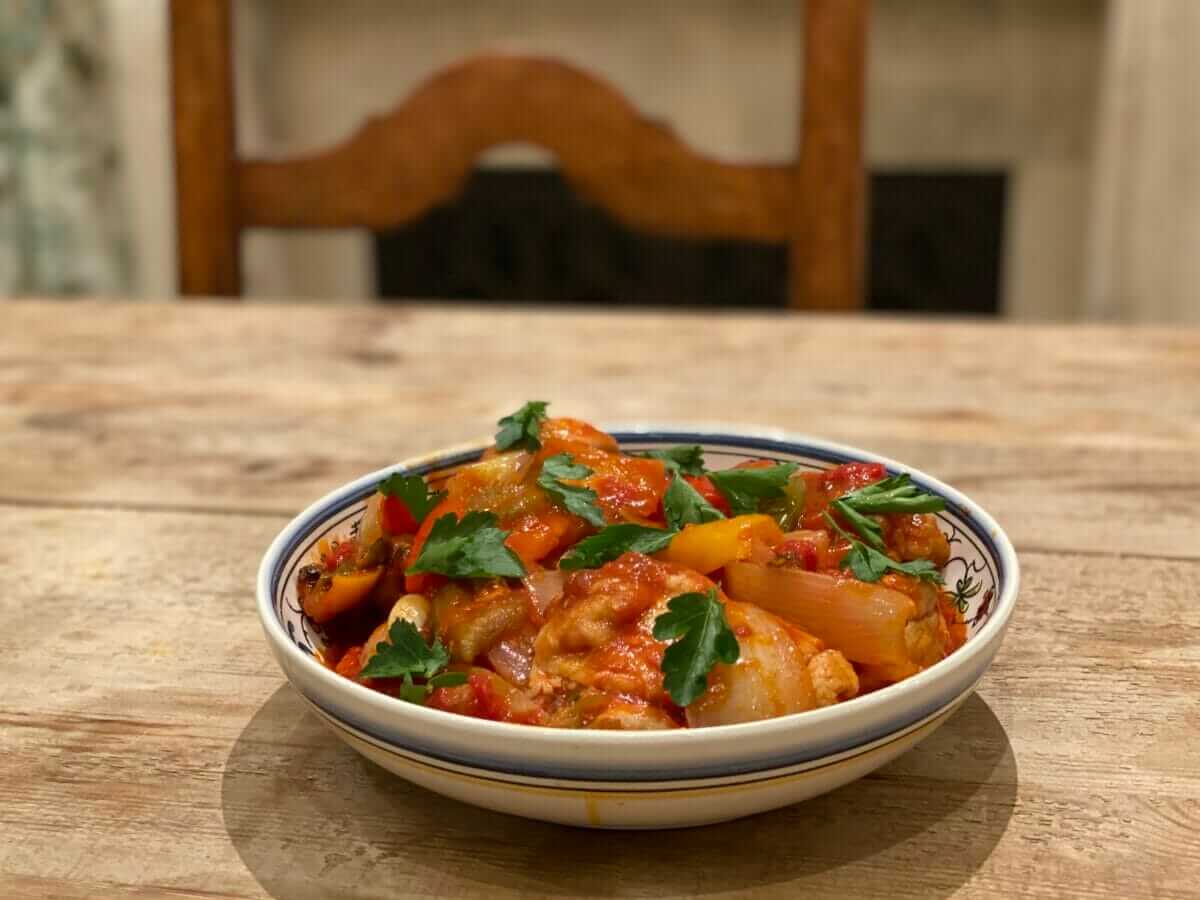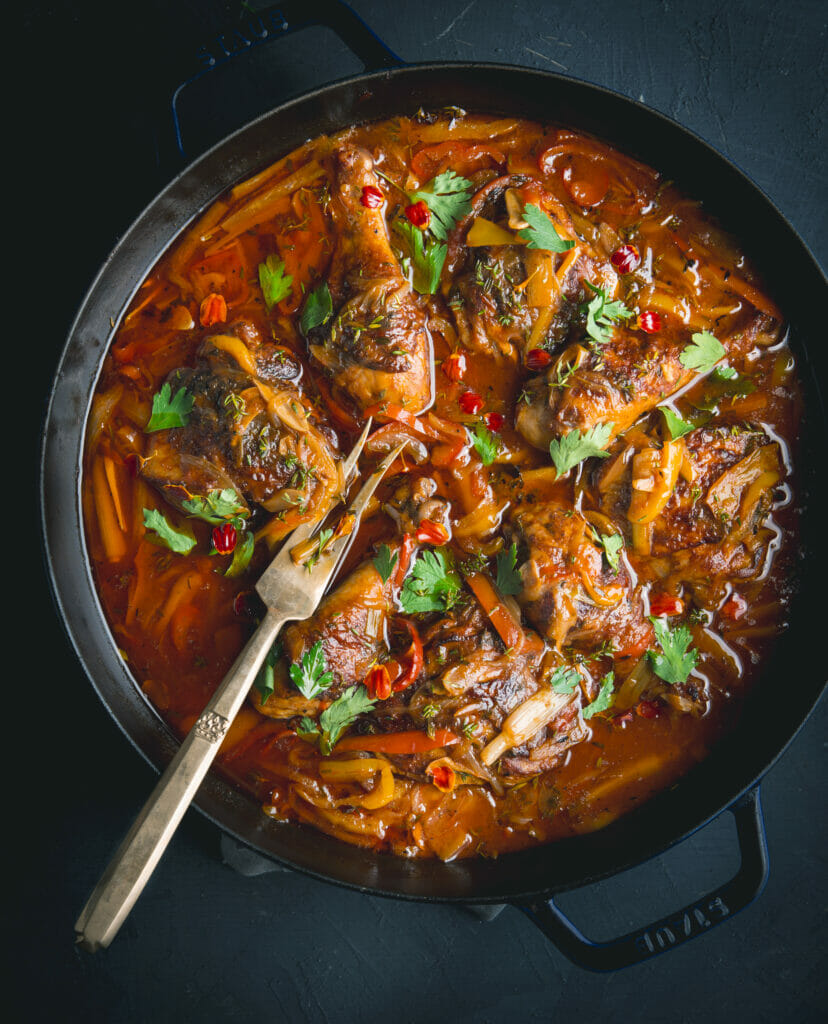Frank Cooks: Everyone’s Table
Our publisher tries new cookbooks and decides if they’re worth the investment.
Frank Cooks: Everyone’s Table
Our publisher tries new cookbooks and decides if they’re worth the investment.

Everyone's Table by Gregory Gourdetcourtesy of HarperCollins Publishers
As publisher of Modern Farmer, I get a lot of cookbooks sent my way. As I add them to my large collection, I always ask myself how so many books ever find an audience.
I am a passionate cook and I do get excited when I run across a new recipe that is both unique and delicious. But the number of ingredients I can ingest is finite. And it’s not often that I run across a recipe that I feel is a show stopper.
I always enjoy the backstory of cookbooks and what motivated a given chef toward a certain cuisine, philosophy or style. If I find the story interesting, I look more closely at the recipes, which is what I did with chef Gregory Gourdet’s new book, Everyone’s Table: Global Recipes for Modern Health.
Gourdet, the son of Haitian immigrants, grew up in Queens. He dropped out of pre-med and enrolled in the prestigious Culinary Institute of America, before he eventually lucked out with his first job at New York City’s Jean-Georges flagship restaurant.
His early years weren’t easy, though. Around this time, Gourdet also fell into an intense multi-year spiral of drug and alcohol abuse. When, years later, he eventually had his “aha” moment, he did what many recovering substance abusers do. With equal intensity, he plunged into health and fitness: yoga, CrossFit and jogging.
His cookbook contains 200 recipes that are free of gluten, dairy, soy, refined sugar and legumes. A lot of them are Paleo-friendly with a focus on superfoods (high nutrients, best fats, with most minerals and antioxidants). Having lived my own life on the Mediterranean diet and having conducted my own six-month experiment as a vegan, some of these recipes piqued my interest (except for the excluding legumes part). A lot of his recipes have a Haitian influence and I love Haitian food, which is often spicy. He even mentions Haitian spicy peanut butter, which my foundation produces as part of its poverty alleviation work in Haiti.
I browsed through all the recipes and decided to try my hand at his Poule Nan Sos dish. I love stewed chicken dishes and it’s not often I make ones that are spicy.

I followed the recipe instructions carefully, but I made a judgment call to add canned tomatoes to the tomato paste for which the recipe called. The 1/2 cup of paste seemed insufficient for the three pounds of chicken. It turned out to be a mistake as the end product was more watery than it should have been. Also, the peppers we purchased weren’t nearly hot enough, so the dish didn’t get the kick it deserved. Having said that, the flavors were delicious and I would recommend trying this dish for yourself.
The following is an excerpt from EVERYONE’S TABLE by Gregory Gourdet and JJ Goode. Copyright ©2021 by Gregory Gourdet and JJ Goode. Published by Harper Wave an imprint of HarperCollins Publishers. Reprinted by permission.

POULE NAN SOS
Serves 4
When I was a kid, we often left Queens on Sunday mornings to visit Mémère, my paternal grandmother, in New Jersey. Along with warm kisses and a few words of broken English, this chicken stew would greet us. Its official name (poule nan sos in Haitian Creole, or “chicken in sauce”) is quite an understatement. The meat is marinated
overnight with onions, garlic, thyme, and chiles along with citrus, the fruits juiced and then rubbed forcefully onto the chicken to access the fragrant oils as well. After the meat takes on all that flavor, it’s stewed with the marinade and loads of bell peppers for a satisfying, thrilling stew. This dish is Haiti, something we make time and
time again. I suspect you will, too.
For Marinating the Chicken
3 pounds mixed bone-in chicken
thighs and drumsticks, rinsed
and patted dry
3 tablespoons kosher salt
1 juicy orange, halved
1 juicy lime, halved
1 juicy lemon, halved
2 medium yellow onions, cut
into 1/8-inch half-moon slices
8 garlic cloves, roughly sliced
2 Scotch bonnet or habanero
chiles, cut in half and sliced
thin
1/4 cup fresh thyme leaves
For the Dish
1/3 cup extra-virgin olive oil
1⁄2 cup tomato paste
1 tablespoon kosher salt
2 red bell peppers, seeded and
deveined, cut into long, thin
slices
2 yellow bell peppers, seeded
and deveined, cut into long,
thin slices
2 cups chicken stock, salted
homemade or store-bought
Small handful roughly chopped
parsley sprigs
MARINATE THE CHICKEN
Put the chicken pieces in a large bowl and season with the salt. Squeeze the citrus halves over the chicken, then spend a minute or so rubbing the cut sides of the citrus against the chicken. Add the onions, garlic, chile, and thyme and toss well, rubbing the chicken as you do.
Cover and marinate in the fridge for at least 12 hours or up to 48 hours.
MAKE THE DISH
Preheat the oven to 375 ℉.
Remove the chicken from the marinade, guiding any stuck-on aromatics back into the bowl. Set a strainer over a small mixing bowl.
Pour the marinade through the strainer, reserving the solids and liquid. Pat the chicken very dry with paper towels.
Heat the oil in a wide heavy, ovenproof pot (I use a 31/2-quart braiser) over medium-high heat just until shimmery. Cook the chicken, skin-side down, occasionally turning the drumsticks but not the thighs, until the skin is deep brown about 8 minutes. Transfer the chicken pieces to a plate.
Reduce the heat to medium-low, add the tomato paste and salt, and cook, stirring often, until it turns several shades darker, about 3 minutes. Add the bell peppers and the reserved solids from the marinade, and cook, stirring occasionally, until the peppers soften slightly and take on a little color, about 8 to 10 minutes.
Return the chicken to the pan, skin side up and in a single layer, then take a minute to pile the peppers, onions, and other aromatics on top of the chicken. Then evenly pour in the reserved liquid from the marinade along with the stock. Cook in the oven, basting every 15 minutes to coat the chicken with the peppers and sauce, until the sauce has thickened slightly and the meat pulls off the bone with a gentle tug from a fork, about 1 hour. Garnish with the parsley and serve.
Follow us
This work is licensed under a Creative Commons Attribution-NoDerivatives 4.0 International License.
Want to republish a Modern Farmer story?
We are happy for Modern Farmer stories to be shared, and encourage you to republish our articles for your audience. When doing so, we ask that you follow these guidelines:
Please credit us and our writers
For the author byline, please use “Author Name, Modern Farmer.” At the top of our stories, if on the web, please include this text and link: “This story was originally published by Modern Farmer.”
Please make sure to include a link back to either our home page or the article URL.
At the bottom of the story, please include the following text:
“Modern Farmer is a nonprofit initiative dedicated to raising awareness and catalyzing action at the intersection of food, agriculture, and society. Read more at <link>Modern Farmer</link>.”
Use our widget
We’d like to be able to track our stories, so we ask that if you republish our content, you do so using our widget (located on the left hand side of the article). The HTML code has a built-in tracker that tells us the data and domain where the story was published, as well as view counts.
Check the image requirements
It’s your responsibility to confirm you're licensed to republish images in our articles. Some images, such as those from commercial providers, don't allow their images to be republished without permission or payment. Copyright terms are generally listed in the image caption and attribution. You are welcome to omit our images or substitute with your own. Charts and interactive graphics follow the same rules.
Don’t change too much. Or, ask us first.
Articles must be republished in their entirety. It’s okay to change references to time (“today” to “yesterday”) or location (“Iowa City, IA” to “here”). But please keep everything else the same.
If you feel strongly that a more material edit needs to be made, get in touch with us at [email protected]. We’re happy to discuss it with the original author, but we must have prior approval for changes before publication.
Special cases
Extracts. You may run the first few lines or paragraphs of the article and then say: “Read the full article at Modern Farmer” with a link back to the original article.
Quotes. You may quote authors provided you include a link back to the article URL.
Translations. These require writer approval. To inquire about translation of a Modern Farmer article, contact us at [email protected]
Signed consent / copyright release forms. These are not required, provided you are following these guidelines.
Print. Articles can be republished in print under these same rules, with the exception that you do not need to include the links.
Tag us
When sharing the story on social media, please tag us using the following: - Twitter (@ModFarm) - Facebook (@ModernFarmerMedia) - Instagram (@modfarm)
Use our content respectfully
Modern Farmer is a nonprofit and as such we share our content for free and in good faith in order to reach new audiences. Respectfully,
No selling ads against our stories. It’s okay to put our stories on pages with ads.
Don’t republish our material wholesale, or automatically; you need to select stories to be republished individually.
You have no rights to sell, license, syndicate, or otherwise represent yourself as the authorized owner of our material to any third parties. This means that you cannot actively publish or submit our work for syndication to third party platforms or apps like Apple News or Google News. We understand that publishers cannot fully control when certain third parties automatically summarize or crawl content from publishers’ own sites.
Keep in touch
We want to hear from you if you love Modern Farmer content, have a collaboration idea, or anything else to share. As a nonprofit outlet, we work in service of our community and are always open to comments, feedback, and ideas. Contact us at [email protected].by Frank Giustra, Modern Farmer
May 11, 2021
Modern Farmer Weekly
Solutions Hub
Innovations, ideas and inspiration. Actionable solutions for a resilient food system.
ExploreShare With Us
We want to hear from Modern Farmer readers who have thoughtful commentary, actionable solutions, or helpful ideas to share.
SubmitNecessary cookies are absolutely essential for the website to function properly. This category only includes cookies that ensures basic functionalities and security features of the website. These cookies do not store any personal information.
Any cookies that may not be particularly necessary for the website to function and are used specifically to collect user personal data via analytics, ads, other embedded contents are termed as non-necessary cookies.